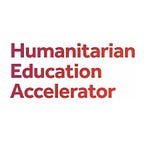Design Series: Designing digital learning to maximise access
by Mike Dawson, CEO of Ustad Mobile — HEA COVID-19 Challenge finalist
The digital divide is a complex issue that is more than just those “with” and “without” access. There are those who have a smartphone but have irregular Internet access, there are others who have a limited mobile Internet bundle that is insufficient to regularly stream video lessons, and there are even those who have regular Internet access but have insufficient memory on their device to install more apps.
COVID-19 makes the digital divide even more consequential than it was before. Ustad Mobile’s open-source app is designed to enable users to teach, learn, and share, online or offline. Here are some of the different design and engineering principles we use to try and do that:
Build offline first
Over 50% of those in low and middle income countries do not have regular Internet access. It is therefore essential that an app that seeks to maximise access to digital learning is engineered to work optimally offline from the beginning. Many apps rely on a server to do all the thinking, and are unable to process data offline. Other apps add an offline mode later, as an afterthought.
Our app allows users to download content in a variety of different formats and use it offline. The app also has a synchronized database that automatically keeps a copy of all the data the user has access to. This data can then be used by the app to create reports for the user without needing the Internet to access a server.
Use existing design patterns
Users will find an app much easier to use if it behaves similarly to other apps on their phone - such as YouTube, Google Play, and Facebook. The student and teacher management in our app is therefore designed to be very similar to the address book. Users will find apps that follow existing design patterns far more intuitive, which will reduce the training time required. Google has published extensive design guidelines as part of their Material Design project.
Minimize memory usage
One third of Android users in India run out of space weekly. Android is a diverse platform and low-end devices may not perform the same as expensive flagship models. It is essential to test on limited capacity devices (e.g. Android Go) from the start, and keep the app install size less than 10MB. No one ever complains when your app starts faster and uses less space (even those with high-end devices). Our app uses compression and deduplication to reduce the size of content downloaded by 40–80%.
Support existing devices and don’t require extra hardware
Smartphones are available for purchase almost everywhere. Additional hardware such as Raspberry Pis and WiFi routers are not so readily available. Sometimes projects that seek to overcome connectivity barriers create new barriers by adding hardware requirements. Today’s $50 smartphones have WiFi and Bluetooth connectivity built in and more processing power than yesterday’s $500+ desktop. Our app has built-in offline sharing that enables any two Android users to share content offline without requiring any additional hardware. It can be complex to do so without breaking mobile operating system requirements, but it is worth it to eliminate those additional hardware requirements.
Think end-to-end (even when you don’t always know what those ends are!)
During our HEA COVID-19 Challenge design sprint, IDEO.org supported us to think through the user experience end-to-end. Mapping the user experience this way helps to consider potential pitfalls and the many stakeholders involved in an education app. Our app is designed to be flexible for organizations to use as they need, but considering various scenarios can help streamline the multiple user experiences.
These are merely reflections on our experience so far, with more to come as we progress through the HEA COVID-19 Challenge. In the meantime, we highly recommend looking at the following resources if you would like to learn more:
- Google’s Build for Billions technical guidelines;
- UX for the Next Billion Users design guidelines; and
- the Principles for Digital Development.
